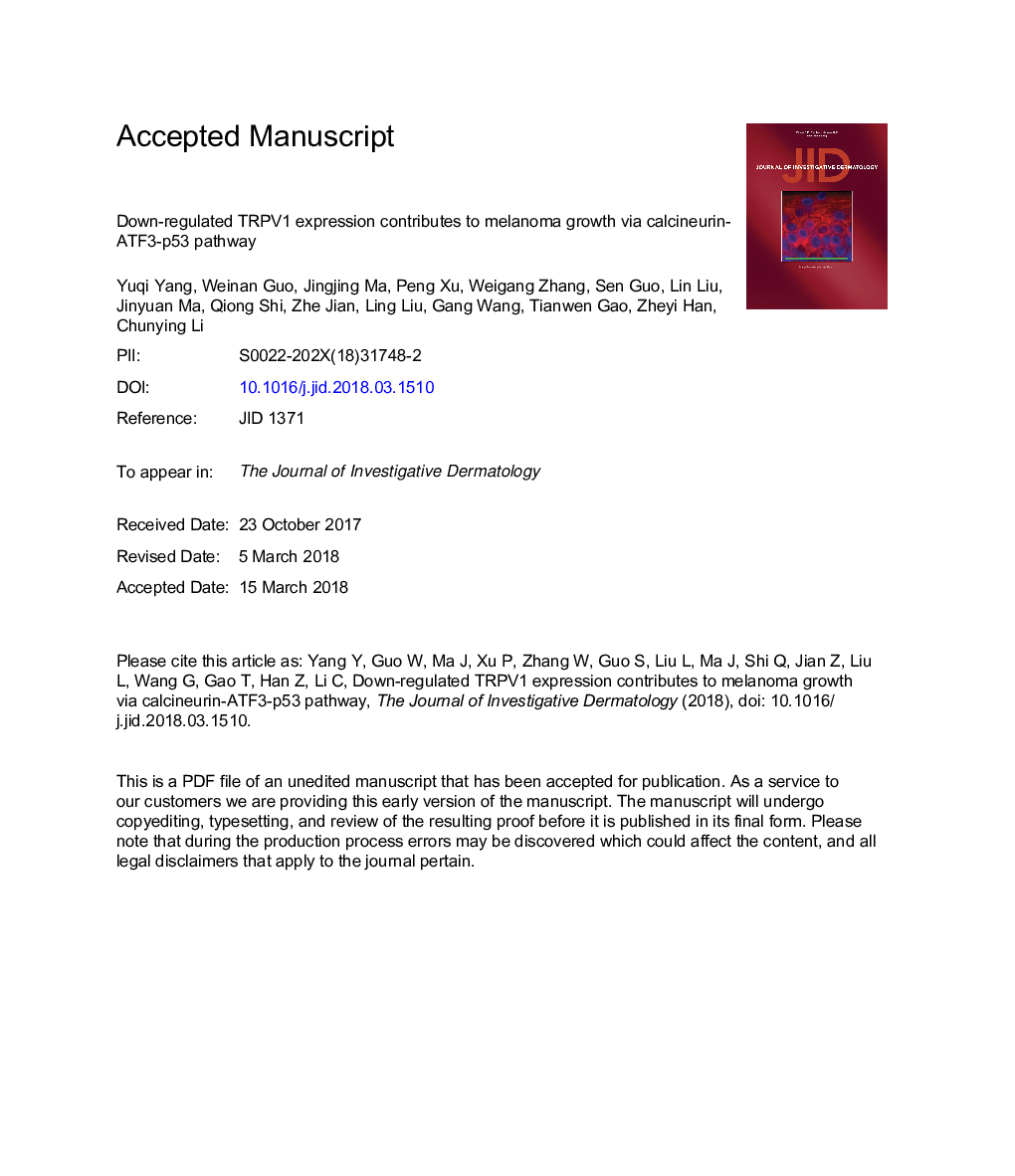| Article ID | Journal | Published Year | Pages | File Type |
|---|---|---|---|---|
| 10217005 | Journal of Investigative Dermatology | 2018 | 35 Pages |
Abstract
Melanoma is the most lethal form of skin cancer with increasing incidence over the years. Because of its rapid proliferative and drastic metastatic capacity, the prognosis of melanoma remains dismal, although the targeted therapy and immunotherapy have gained revolutionary progress recently. Therefore, it is of necessity to further clarify the mechanism of melanoma pathogenesis for developing an alternative treatment strategy. Transient receptor potential vanilloid 1 (TRPV1) is a nonselective Ca2+ channel greatly involved in regulating cell apoptosis, proliferation, metabolism, and cancer development, but its role in melanoma remains unknown. Herein, we first found that TRPV1 expression was significantly decreased in melanoma tissues and cell lines, compared with nevus tissues and normal melanocytes, respectively. We then proved that TRPV1 overexpression or its agonist capsaicin treatment inhibited melanoma growth by activating p53 and inducing cell apoptosis. A subsequent mechanistic study revealed that TRPV1 induced Ca2+ influx to regulate p53 activation via calcineurin-ATF3 transcriptional cascade. Finally, the effect of TRPV1 on melanoma growth was proved in vivo. Altogether, our study demonstrates that TRPV1 is a potential tumor suppressor in melanoma.
Related Topics
Health Sciences
Medicine and Dentistry
Dermatology
Authors
Yuqi Yang, Weinan Guo, Jingjing Ma, Peng Xu, Weigang Zhang, Sen Guo, Lin Liu, Jinyuan Ma, Qiong Shi, Zhe Jian, Ling Liu, Gang Wang, Tianwen Gao, Zheyi Han, Chunying Li,
